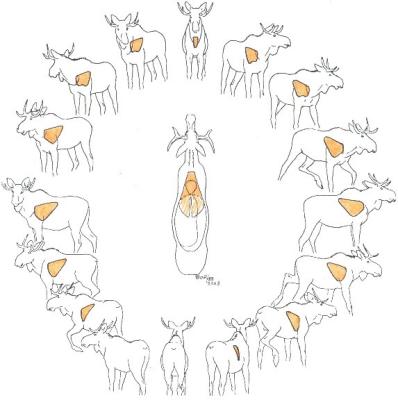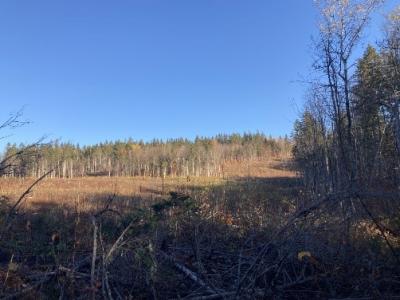Moose Hunting Guide
Highlights, legal requirements, and tips for NH Moose Hunters
All regular hunting regulations apply as well as all moose-specific regulations specified in the NH Moose Hunting Regulations
Moose Hunting Basics
- Each permit holder (permittee) may select one person of any age (subpermittee) to join him or her on the moose hunt.
- The limit is one moose per permit, which may be shot by either hunter.
- Archery, muzzleloader, and regular firearms hunting are allowed, according to the hunting license type the hunter possesses.
- Hunting is permitted by wildlife management unit and hunters may only hunt in the unit assigned to them.
- The percentage of permits issues to non-residents is the same as the percentage of hunting licenses sold to non-residents in the previous year.
Scouting
Successful moose hunters spend on average 40 hours scouting.
Aerial maps- Use aerial imagery to locate areas with conifer cover and young forest that will provide travel corridors and forage for moose.
Land ownership- Fish and Game encourages hunters to be respectful and ask all landowners for permission to hunt on their land. Verbal or written permission is required to hunt on posted property. Written permission is required to operate ATVs off official trails. Landowners often have insight on good hunting areas.
Field truth- Check the area out on foot. How will you get the moose meat out?
The NHFG statewide interactive WMA viewer map has maps with aerial imagery, young forest stands, and conservation lands.
Consider using a guide service if you will not have sufficient time to scout.
Hunting Methods
All general hunting regulations apply, see the NH Hunting Digest and NH Moose Regulations for details
New Hampshire’s hunt is after peak rut and moose are feeding heavily at this time of year to put on weight for the winter. Preferred food (browse) during this time includes the leaves and twigs of young pin cherry, aspen, yellow birch, and maple trees. Areas with abundant food near conifer stands will be the best for finding moose.
Techniques:
Calling- Variable effectiveness due to post peak rut timing, but can be combined with any technique.
Sit and wait- Most effective in areas with browse and long viewing distance, such as clear cuts.
Spot and stalk- Useful for areas without long viewing distances. Moose have excellent hearing, so try to be quiet and minimize breaking large twigs.
Most moose (60%+) are taken before 10 am. This is partly because moose are more likely to be moving during the cooler early morning temperatures and hunters prefer to remove their moose in the daylight.
Sub-permittee: A permittee may designate a sub-permittee who can also hunt. The sub-permittee must be within sight and hearing, excluding electronic devices, when actual and physical control can be effected.
Making a clean kill
Weapon
See the New Hampshire Moose Regulations for legal weapons and projectiles, there are minimum requirements. Being familiar and proficient with your weapon is essential- practice!

Dr. Bengt Roken, DVM
Shot Placement
A well-placed shot is essential to cleanly take a moose and protect the meat. Be patient and wait for large exposure of vital organs.
Trailing and recovery
Moose that are vitally hit may travel more than 100 yards and show no signs of being mortally wounded. Give the animal some time, typically 30 minutes before approaching. You must make every effort to recover wounded animals.
It is important to not mistakenly shoot a second moose after firing at the original target. This mistake occurs because cows with yearlings or two young bulls can look similar and in thick vegetation you may lose sight of the initial target. Shooting multiple moose is prohibited.




